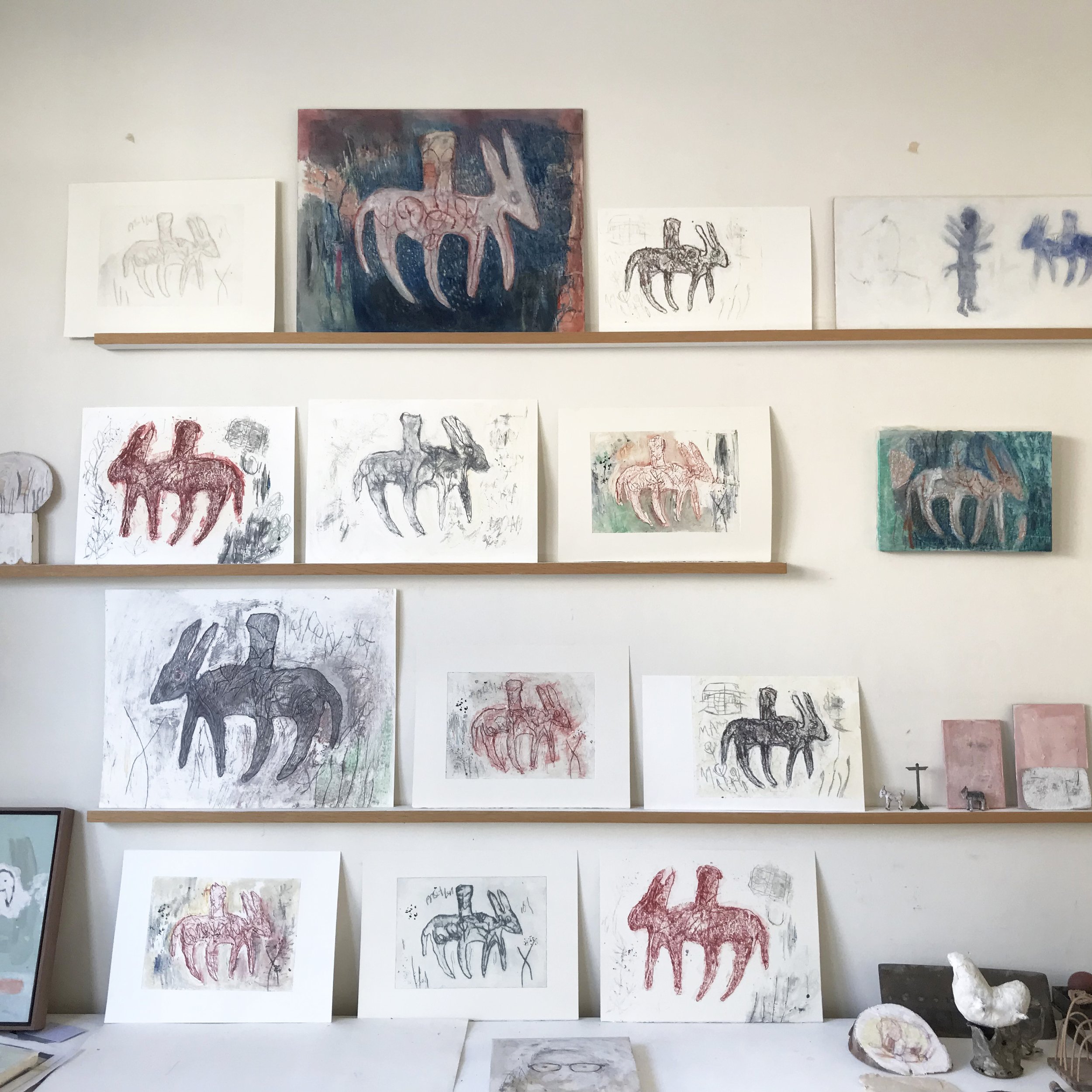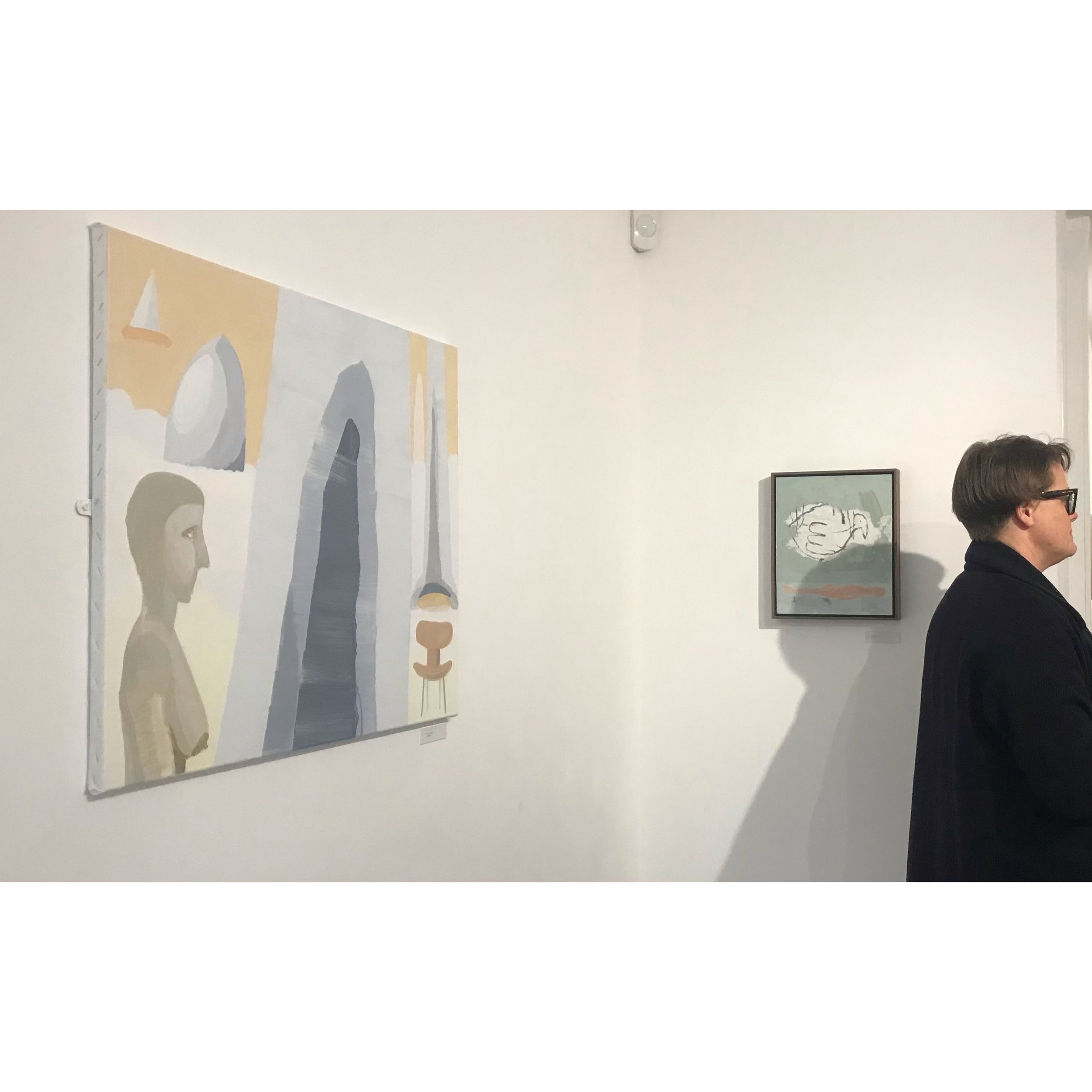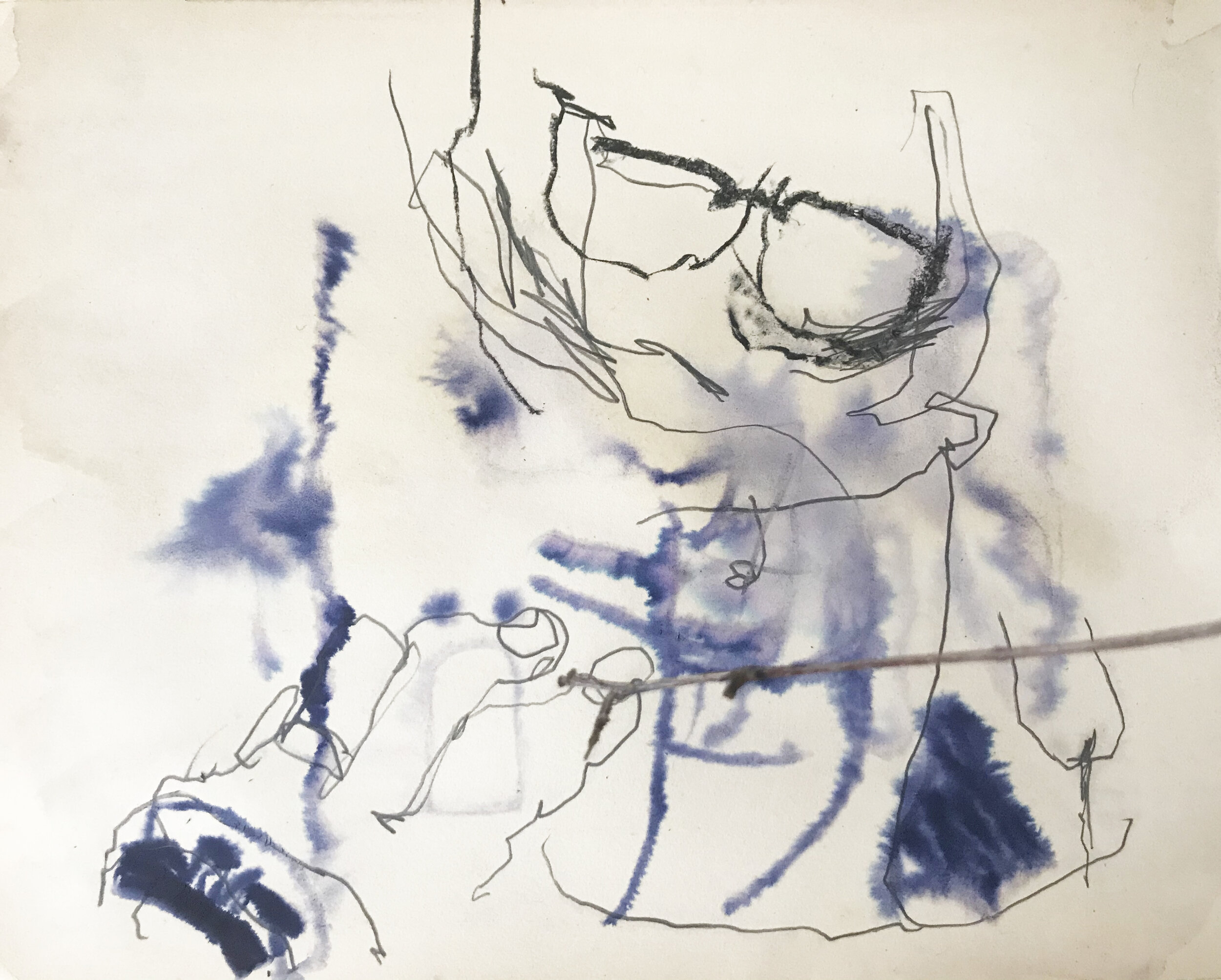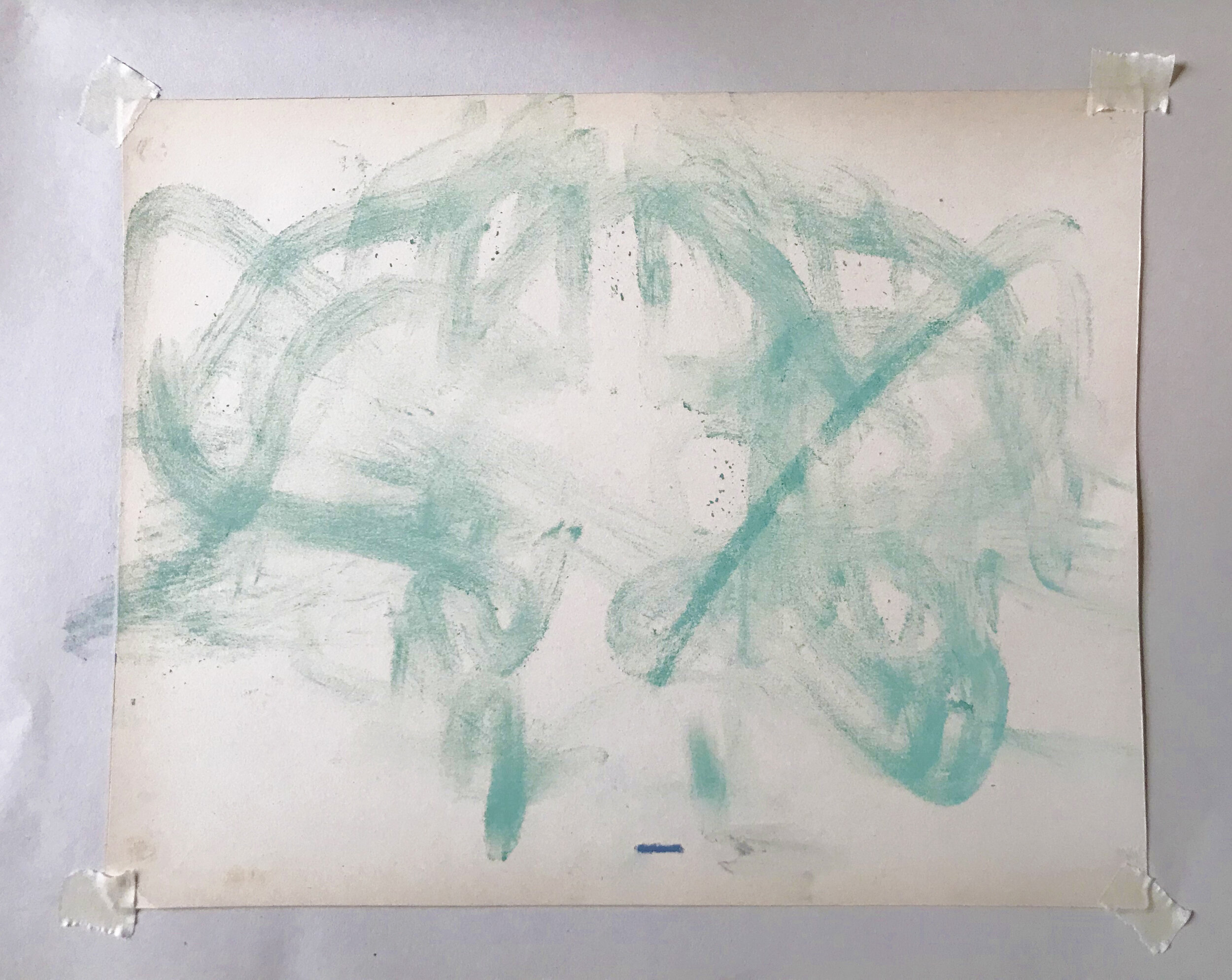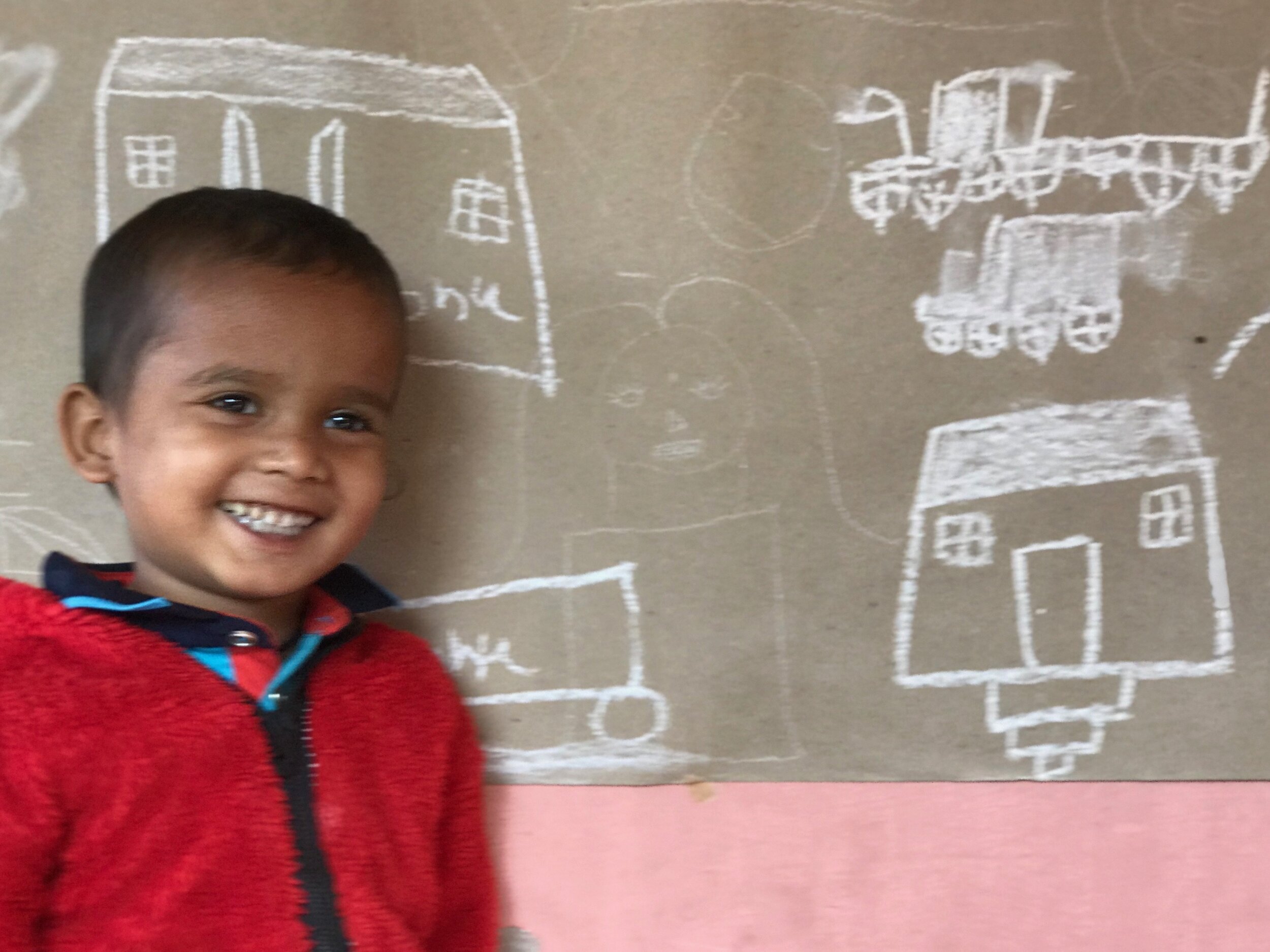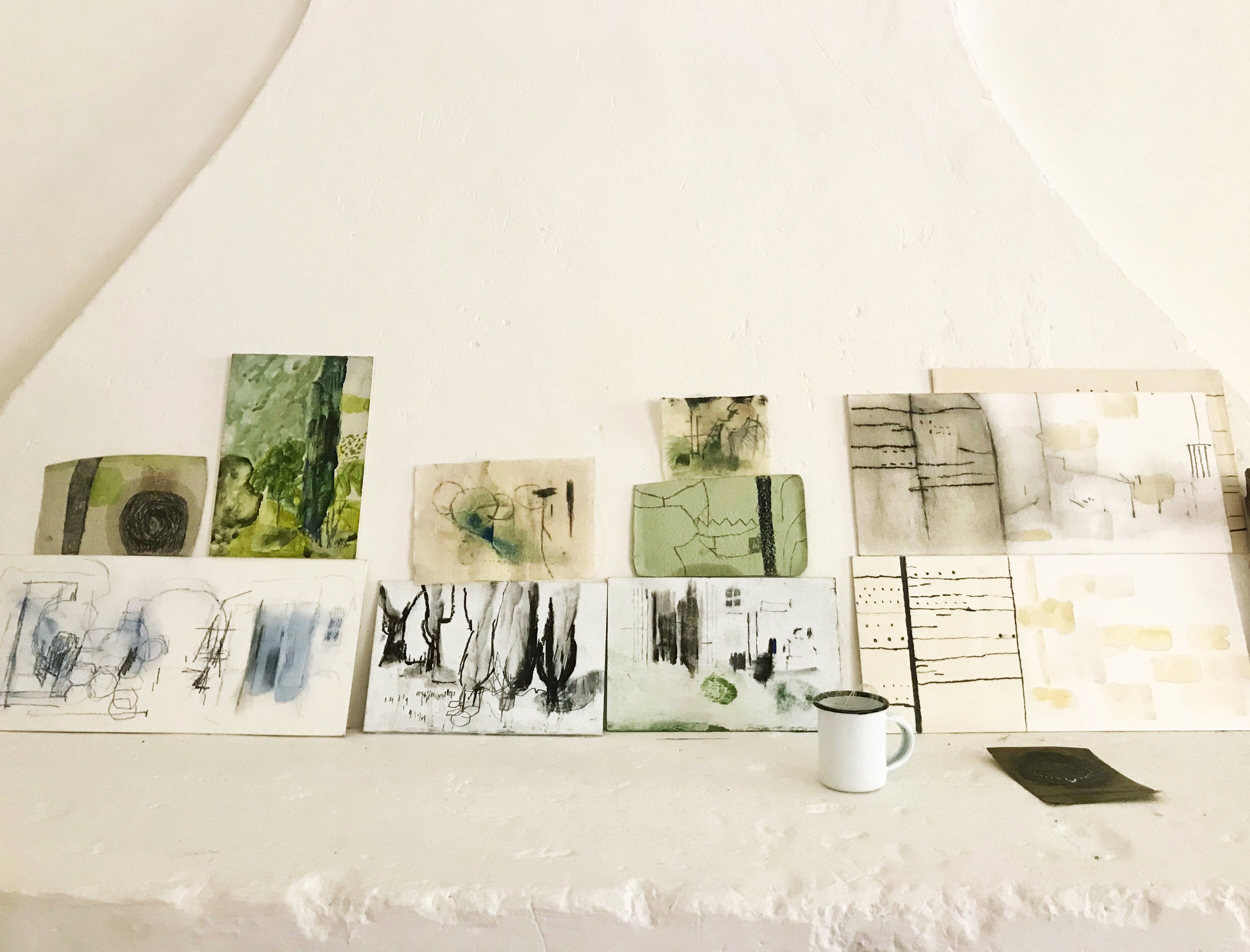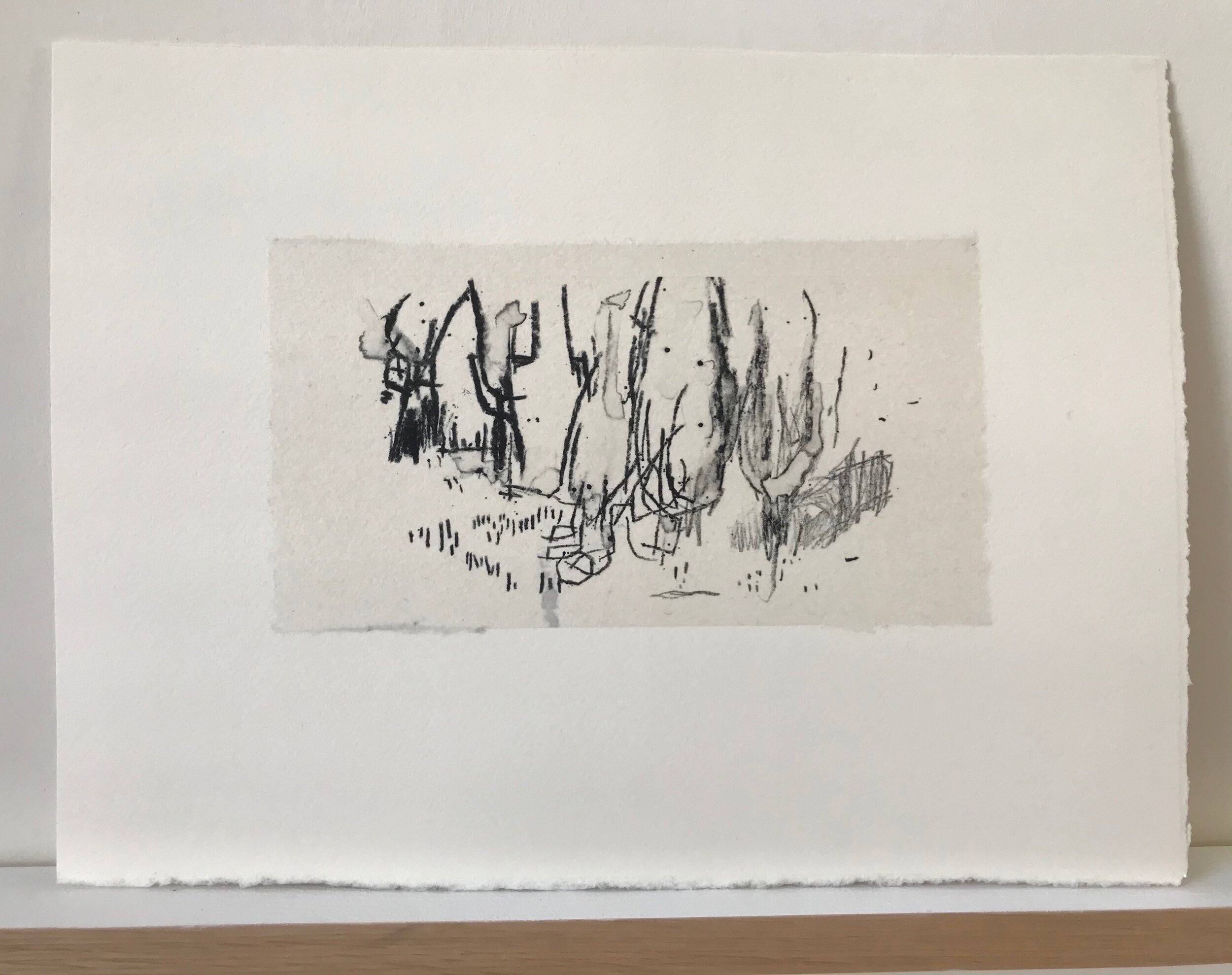A PAINTERS COLLECTIVE
2 Sept-15 Oct 2023
Curators: Sarah Praill, Emma Withers and Lucy Cade
An exhibition by a group of 26 painters brought together through the Turps Correspondence Course, showing recent work in three, two-week shows.
What lies beneath the skin of an artwork? What makes an artwork get under OUR skin?
As its definition as a protective barrier, the skin holds in and holds away; a permeable container that supports layers of life. Equally, the surface of an artwork can reveal or bely the journey of its making, the artist can choose how much or how little to share.
This show invites you to consider what goes on beneath. The life of the work in this exhibition lies as much in the viewers’ perception of them as it does in the minds of the artists who created them. As a collective we ask our audience to observe, reflect and allow the works under THEIR skin.
The painting is not on a surface, but on a plane which is imagined. It moves in a mind. It is not there physically at all. It is an illusion, a piece of magic, so that what you see is not what you see.
Philip Guston
Link to Instagram for more information, events etc:
